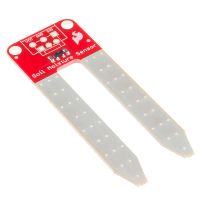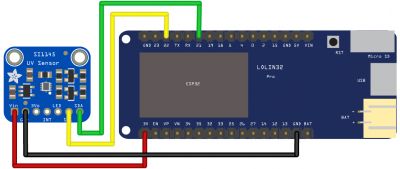Difference between revisions of "Zoönology"
(→Code) |
(→Code) |
||
| Line 14: | Line 14: | ||
==== Code ==== | ==== Code ==== | ||
| − | < | + | <syntaxhighlight lang="c++"> |
int soilPin = 32; // the sensor signal pin is connected to pin 32 on the board | int soilPin = 32; // the sensor signal pin is connected to pin 32 on the board | ||
int soilValue = 0; // we set the initial value of the soil sensor to 0 | int soilValue = 0; // we set the initial value of the soil sensor to 0 | ||
| Line 27: | Line 27: | ||
delay(1000); // wait 1 second (1000 milliseconds) | delay(1000); // wait 1 second (1000 milliseconds) | ||
} | } | ||
| − | </ | + | </syntaxhighlight> |
=== UV/IR/Visible Light sensor === | === UV/IR/Visible Light sensor === | ||
Revision as of 10:49, 31 January 2023
Zoöp
"Zoöp" is an experimental model for organizations to transition towards ecological justice - by not only preaching, but radically practicing it. In a Zoöp, non-humans have an equal voice next to humans, on all levels of the organization and its decision-making. As the initiators describe it: “Zoöp is short for Zoöperation: coöperation with zoë – (Greek for ‘life’) Together with other Zoöps we work towards the transformation of our economy into a regenerative human-inclusive ecosystem, a network of exchange of matter, energy and meaning that supports all bodies in their existence”. [Zoöp manifesto]
Zoönology: Observing & Sensing
The name of this workshop, "Zoönology", is the combination of technology and zoë. It may seem paradoxical to combine computation and the model of Zoöp as computation depends on the extraction of finite resources. Therefore, as we make the connection during the workshop by making, the question arises to whether computing and network technologies could have a place in regenerative, human-inclusive, reciprocal ecosystems [zoop.earth]. In the workshop we will use a low powered ESP32 micro controller and a environmental sensor to observe non-human or non-living entities.
Environmental sensors
Soil moisture sensor
Schematic
Code
int soilPin = 32; // the sensor signal pin is connected to pin 32 on the board
int soilValue = 0; // we set the initial value of the soil sensor to 0
void setup() {
Serial.begin(9600); // make a connection to the computer
}
void loop() {
soilValue = analogRead(soilPin); // read value from the soil pin (32)
Serial.println(soilValue); // send value to the computer
delay(1000); // wait 1 second (1000 milliseconds)
}
UV/IR/Visible Light sensor
Schematic
Code
#include <Wire.h>
#include "Adafruit_SI1145.h"
Adafruit_SI1145 uv = Adafruit_SI1145(); // adafruit library to talk to the Si1145 sensor
float visibleLight; // variable to store the visible light sensor value
float infrared; // variable to store the infrared sensor value
float uvIndex; // variable to store the uv index sensor value
void setup() {
Serial.begin(9600); // make a connection to the computer
if (! uv.begin()) {
// this checks if the board can find the Si1145 sensor
Serial.println("Didn't find Si1145");
while (1); // and stops if it cannot find the sensor
}
}
void loop() {
visibleLight = uv.readVisible(); // read visible light value from the sensor
infrared = uv.readIR(); // read infrared value from the sensor
uvIndex = uv.readUV() / 100.0; // the UV is multiplied by 100 so we divide to get the UV index
delay(1000); // wait 1 second (1000 milliseconds)
}
Air Quality Sensor
Temperature/Humidity Sensor
Pressure/Temperature/Altitude sensor
Code
All the starter templates and final code can be found on our Github page.
Planning:
Week 1: (7th of February)
* Introduction in the ESP32 micro controller & sensors * Picking your environmental sensor for coming weeks * Research your sensor
Week 2: (14th of February)
* Connecting your sensor to the Lolin D32 Pro * Saving sensor data to the SD card
Week 3: (21st of February)
* Displaying sensor values on a local captive portal
Week 5: (7th of March)
* Field testing
Week 6: (14th of March)
* Extracting sensor values from the field test * Documenting findings on the captive portal
Week 7: (21th of March)
No class
Week 8: (28th of March)
* Finishing up the captive portal
Tutorials
To be added ...





